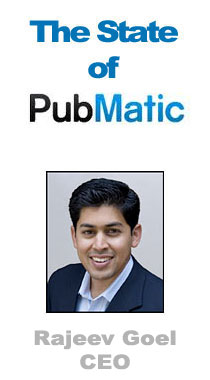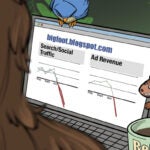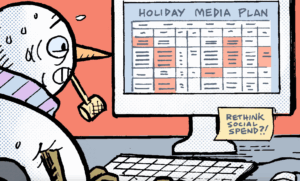 CEO Rajeev Goel is CEO of PubMatic, a sell-side platform.
CEO Rajeev Goel is CEO of PubMatic, a sell-side platform.
As part of its “State of…” series of articles with industry executives, AdExchanger.com spoke with Goel to discuss his company, his views on the space, and the state of PubMatic today.
Click below or scroll for more:
- Effects Of Google-Admeld
- Is PubMatic An Exchange?
- The Buyside and Mobile
- PubLink, Apps For Publishers
- Revenue Momentum and Milestones Ahead
What effect has Google’s acquisition of Admeld had on the marketplace and PubMatic?
First, clearly the media and technology market is consolidating and a number of big deals have happened – Admeld as you mentioned, but also deals for companies such as Efficient Frontier, Auditude and Amobee most recently.
We see our role within that as being a platform for consolidation ourselves and simplifying the lives of publishers by bringing them multiple solutions, whether they’re developed in-house or through a third party, across our platform for publishers. More specifically, in terms of what we are seeing since the Google and Admeld transaction, the fact that we are both open and neutral is leading us to take share because publishers see us as the independent leader and alternative to a Google-only strategy.
I think that stems from a couple of things. One is we’re fully aligned with the interests of the publishers. We have no competing business. We have no conflicts of interest, and obviously, it’s an interdependent ecosystem. We try to work with everyone and we work with Google within that ecosystem. We’ve had three record quarters in a row from a growth perspective – and within that sequential quarter on quarter growth.
Over the past couple of years, can you characterize how publishers have changed in regards to acceptance of technology that a company like PubMatic offers?
There’s no doubt that publishers have come a long way. At our past couple of Ad Revenue events, you used to hear about how the buy side was out in front of the sell-side. And, the DSPs and the trading desks were out in front of the publishers. You’ve heard a lot less of that in the last six months. That’s because the publishers are closing that gap and putting in place the teams and skills to take advantage of the new environment of selling. They’ve also put in place much more of the technology and platforms, not only ours but that of other companies in the ecosystem.
In response, we’ve brought to market a solution called PubDirect, which allows publishers to monetize guaranteed and non‑guaranteed inventories. It’s the first time that a platform has brought those two components together within a private marketplace that covers all demand channels. And so, for example, we now have publishers that are running private marketplaces where they are selling home page inventory on a guaranteed or non‑guaranteed basis with a direct relationship to the agency trading desk. To your point about a year or two ago, that’s a huge change.
Second of all, we’ve seen the growth of the solution portfolio – not only yield monetization solutions, but analytics and the ability for the publisher to drive operations-focused strategy and through all parts of the publisher including the C suite.
Would you say PubMatic offers, essentially, exchange technology? A lot of people look at SSPs as being like exchanges. How do you respond to that?
There are absolutely aspects of our offering that are exchange-like. It’s important to understand where this has evolved from – which is helping publishers maximize the yield and revenue for their media and audience. There are a couple of approaches for doing that. One of them is through algorithms, analysis and finding the best possible match between the buyer and the seller. Then, another is facilitating as much demand as possible so that the publisher can have access to it.
We have well over 90 percent of the display ad spend in the ecosystem available on our platform. So, when you think about that second capability, that’s where this question comes from which is, we’ve built a lot of proprietary technology and services for the demand side of the ecosystem in order to help them connect and source media and audience as efficiently as possible.
There are some key fundamental differences with exchanges, though. The first of which is that our focus is not on automating the display system. That’s what exchanges try to do. Our focus is on what publishers need, which is, “How do I drive my display business forward?” That’s a different lens.
Again, like a Google Ad Exchange, Right Media Exchange or OpenX, some of the differences are that you have a rich set of publisher controls, insights and analytics with us that no exchange has. And, whether you’re a network, DSP or an exchange, we love to integrate in with you and bring your demand onto the platform. Exchanges are challenged in doing that. And then third, we are focused on premium publishers and a transparent environment. Again, if you were to look at any of those exchanges that I mentioned, that’s clearly not the case.
Turning your view to the buy side, what is it that the buy side isn’t taking advantage of right now that they should be – or are just beginning to?
Two things come to mind. One is first‑party data. Over the last, 2-3 years, it has been about layering in more data. That was coming from a place of almost no data to now data saturation. So, it was the scale data players, whether they’re data providers or data exchanges. Now that that challenge has been solved, to a certain degree, and the focus is on differentiated, proprietary data.
The second area I would highlight is cross‑channel advertising and media buying – primarily with display and mobile. People are buying display and mobile. But by and large, those are separate and discrete functions and campaigns. We’re starting to see the conversations coming together around buying in a multi‑channel fashion. That’s where we are taking our business.
We announced recently the acquisition of MobiPrimo, which will enable us to further accelerate our mobile platform and mobile development. We now have over 25 people working on mobile and that comes with all of the broader access and resources within PubMatic, whether it’s the existing customer relationships, salespeople, the broader development team or our infrastructure around the globe.
How long do you think we’re away from effective cross‑channel buying?
18 months out is probably reasonable. It’s certainly three to four quarters at minimum. Mobile advertising is just getting to a scale where it’s ready to take on the complexity and the opportunity of cross‑channel buying and selling – meaning that people are seeing results in mobile and some of the hard problems that are required for audience targeting and user attribution modeling to enable cross‑channel marketing can be tackled.
Can you give us a sense of the scale of PubMatic today, revenue, profits – even impression levels?
I’m happy to share what I can. From a momentum perspective, we are growing extremely rapidly and in fact more so than we ever have done before. We talked a bit about that earlier in terms of the impact that the Google Admeld transaction has had for us, where we’ve now grown three quarters of sequential, record growth rate from a revenue perspective.
On our platform today, it is in excess of 400 million unique users on a monthly basis. We are growing well in excess of 100 percent per year from a GAAP revenue perspective. We are now 275 employees, up from 150 at the beginning of 2011. Now in terms of your question on profitability, we last did a fundraising a little over two years ago. So that probably tells you something about our state of profitability, given that we’ve grown so significantly from a team perspective.
What are your thoughts about the video advertising market today and where PubMatic fits?
For us, we don’t view video as a channel but rather as another ad format. That sits on top of the channels we talked about earlier: display, mobile, tablet, even connected TV. From our perspective, we intend to support video just as we do rich media or traditional display ad units or the new expanded ad units announced at the IAB Leadership Summit recently. So video is a clear opportunity. In terms of programmatic buying and selling, it will happen in video as it is in other ad formats. I frankly don’t see any reason why it wouldn’t be. Obviously, there are some technology challenges that are specific to video ad units that need to be worked out.
What about opportunity outside of the US?
Geographic growth is a huge part of our focus in 2012. We plan to roughly quadruple our, let’s say, non‑North American presence in 2012. So that is primarily in Europe but we are looking at other markets beyond Europe. We’ve opened UK, Germany, and are in the process of opening France.
Can you talk a bit about your new PubLink solution?
PubLink is an enterprise app store providing an open set of open APIs and prepackaged integrations for publishers to very quickly act as and deploy dozens of third‑party applications or vendors across the ecosystem. Here I’m talking about data providers, ad verification providers, malware, privacy providers, analytics and insight providers. So all of the different point solutions that publishers want to work with will be seamlessly integrated into our platform for publishers to essentially turn them on and off as they desire.
How does that work on the cost to the publishers? Do they get charged on an a la carte basis?
There are two approaches. The publisher can create their own business relationship with the application provider. Then, they can use our platform as the technology and transaction platform – meaning they put in place a contract with the app provider and use us to turn on, activate and manage that. Alternatively, if publishers want to even further simplify this, we have a contractual relationship in place with the app provider. So the publisher can leverage our contractual relationship. So where there is a fee, then the publisher would pay us and we would pay the app provider. We’re agnostic in terms of how simple or complex the publisher wants it.
Can you give me a quick use case?
Let’s say we’ve got a privacy compliance provider. Prior to our enterprise app store, the publisher would have to contract with the privacy compliance provider and then do their own integration with that provider – whether that’s API or pixels or code on the page, they would have to figure that out themselves. Now through our platform, they don’t have to do a contract. They can leverage our relationship with the privacy compliance provider. And then second, in terms of turning it on, all they have to do is go into our UI, which they’re already logging into on a daily basis.
From the app provider perspective, instead of integrating each individual publisher, they can just integrate once with us and now they get access to hundreds of publishers.
Finally, future milestones. You’ve already covered a few. Anything you’d like to add in terms of goals ahead?
In terms of goals there, we obviously continue to see the programmatic buying and selling of media and audience now move beyond non‑guaranteed into guaranteed. So whether that’s going to be 5, 10 or 25 percent of the publisher’s revenue in two years remains to be seen. But from a milestone perspective, we plan to continue to drive and support that. I suspect from a headcount perspective we’ll be well north of 500, if not closer to 600 to 700 employees within two years. And we’ll be operating in probably 80 percent of the major display ad markets on a global basis.
By John Ebbert
Follow PubMatic (@pubmatic) and AdExchanger.com (@adexchanger) on Twitter.













